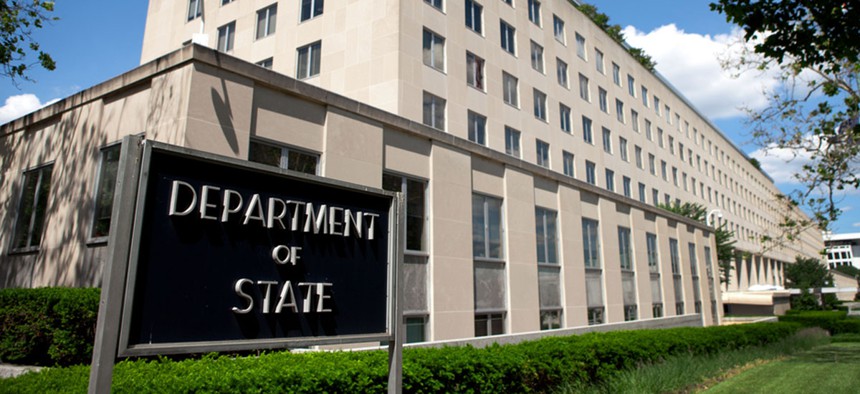
Mark Van Scyoc / Shutterstock.com
Defense: State Department Doesn’t Have Enough People Tweeting At ISIS
In the war of online influence, the U.S. is gaining ground but is still hopelessly outmanned.
To change the minds of more than 16 million Muslims who could support the Islamic State, almost entirely via social media, the U.S. State Department has a counter propaganda team of just about 20 people, according to a senior Pentagon official. Translation: the U.S. is not doing enough to out-tweet ISIS.
Michael Lumpkin, assistant secretary of defense for special operations/low-intensity conflict, said the Defense Department provides 25 percent of them at State’s Center for Strategic Counterterrorism Communications, or CSCC that focuses on counter extremist rhetoric all over the world (an outfit of about 66 people). “In the CSCC, there’s 20 some odd people who are working that particular mission set and we're providing about 25 percent of them, detailed at the Department of State to assist with that mission ... The fact that we have 25 percent of the CSCC detail to fill critical positions over there tells me that they don’t have the manpower to put against the mission like they would,” he told Congress on Thursday. The State Department confirmed that the number of Defense Department employees working the CSCC detail was 5.
Today, the State Department effort to erode the influence of ISIS on the social web, the Think Again Turn Away campaign, has received mixed reviews at best. While the Defense Department may be playing a support role to State, it has it’s own social media mission when it comes to ISIS. That includes using intelligence gleaned from social media on a tactical level, and knowing who to hit and when. “Everyone of our operations has the information operation component to it,” he said. To see what that looks like, turn to an event during the summer when the U.S. Air Combat Command was able to select and strike a target based on a single piece of information posted to social media. The strike took less than 24 hours.
Lumpkin did say that counterterrorism influence operations are growing smarter. The joint agency effort is reaching out to commercial partners that have actual social media chops. Using private firms to conduct social media marketing on behalf of the U.S. has been a major source of criticism. They’re also taking a slightly more nuanced and personal approach and attempting to tailor messages to be more individual. He cited a recent white paper by Lebanon-based marketing group called Quantum, which categorizes ISIS supporters and members into nine different types. That more detailed categorization “allows for better targeting,” he said, in a hearing before the House Armed Services Subcommittee on Emerging Threats and Capabilities.
So who are the ISIS supporters you’ll meet online? The types are: the status seeker, the identity seeker, revenge seeker, redemption seeker, responsibility seeker, thrill seeker, the ideologically driven supporter, the justice driven supporter, and death seeker.
“As things are developed, just as our enemies target different audiences, we have to have messages directed to these nine different bins.”
It sounds not unlike the way the Obama administration used analytics to push voter turnout during the 2012 election. Chicago-based Civis Analytics separated potential voters into bins not on the basis of age, income, or other demographic fields but rather on the basis of willingness to engage with the campaign by volunteering, raising money, or simply opening emails the millions upon millions of emails that the campaign was sending all the time.
Rep. Trent Franks, R-AZ, pointed out the obvious challenge in attempting to appeal to the same crowd that ‘likes’ violent decapitation videos. “It sounds like that last guy is going to be a little bit recalcitrant, the death seeker.” And there are millions of them.
(Image via Mark Van Scyoc / Shutterstock.com )







